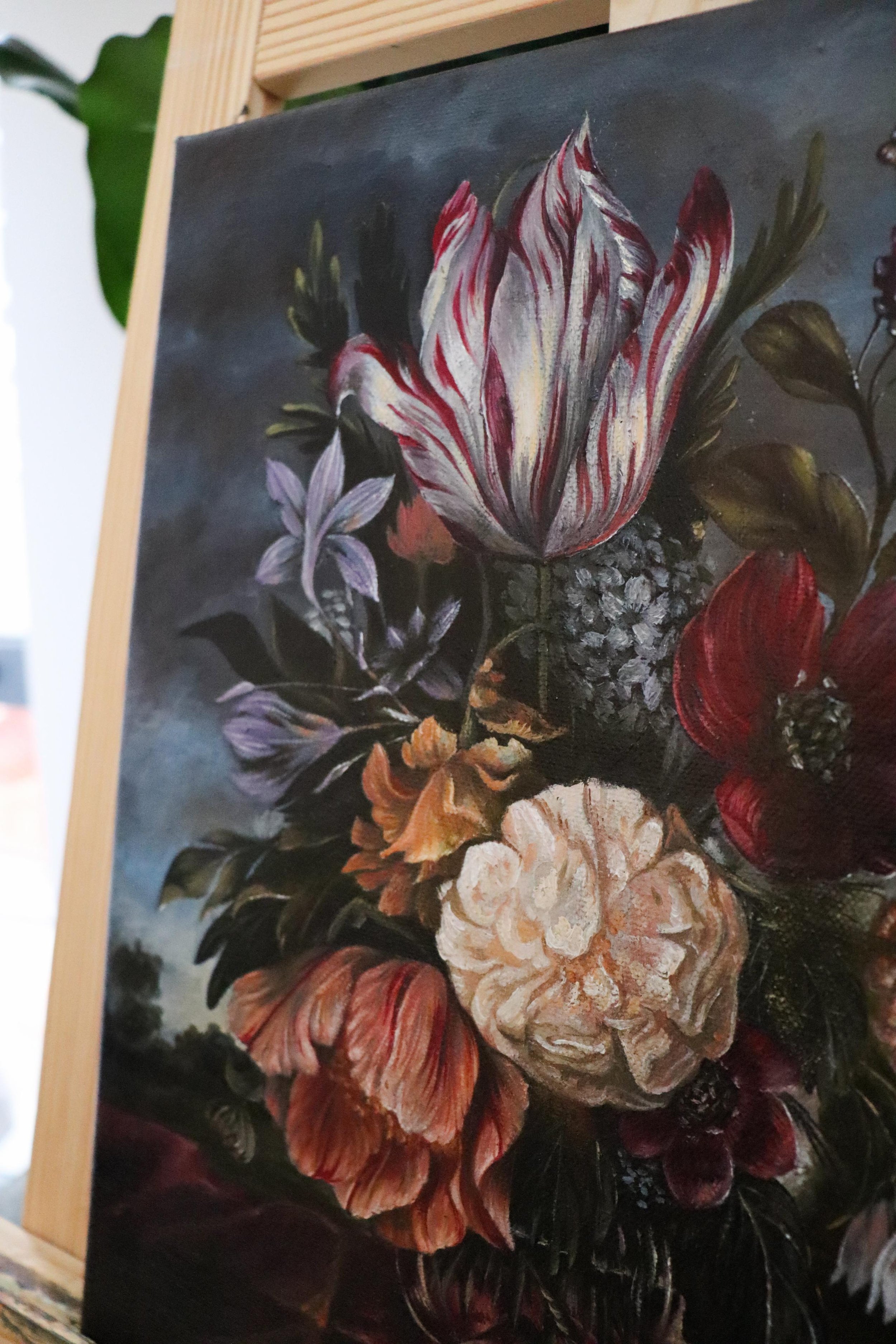 Image 1 of 2
Image 1 of 2

 Image 2 of 2
Image 2 of 2



Bouquet of Rare Flowers
The bouquet which will never be, it features three extremely rare flowers - Twinflower, Spreading bellflower and Pheasants-eye
Twinflower (Linnaea borealis): Although mostly found in North East Scotland, the twinflower population has become critically scarce. In an attempt to bring the plant’s numbers back up, it has been the subject of conservation efforts in and around the Cairngorms National Park. The twinflower’s numbers have declined by 44% since the 1970s. These changes mean that patches of twinflowers in woodlands are often too far apart to be properly cross-pollinate or produce seeds. It has been identified as a conservation priority in the UK Biodiversity Action Plan, the Cairngorms Local Biodiversity Action Plan, and is included on the Scottish Biodiversity List.
Spreading bellflower (Campanula patula): Unlike many bellflowers, the petals spread widely, hence the name. Branches often flop onto surrounding vegetation, so the plants can appear prostrate if they are in the open. Occurs mainly on the Welsh borders and in the West Midlands. Classified as Endangered, considered to be facing a very high risk of extinction in the wild. A new Priority Species under the UK Biodiversity Action Plan.
Pheasant’s-eye (Adonis annua): Once considered a weed of arable fields, the development of intensive agricultural practices nearly wiped out the Pheasant's-eye in the wild. Classified as Endangered on the Vascular Plant Red Data List for Great Britain. Priority Species under the UK Post-2010 Biodiversity Framework.
Original oil painting on canvas 20.00 x 15.75”. Hand signed and varnished.
The bouquet which will never be, it features three extremely rare flowers - Twinflower, Spreading bellflower and Pheasants-eye
Twinflower (Linnaea borealis): Although mostly found in North East Scotland, the twinflower population has become critically scarce. In an attempt to bring the plant’s numbers back up, it has been the subject of conservation efforts in and around the Cairngorms National Park. The twinflower’s numbers have declined by 44% since the 1970s. These changes mean that patches of twinflowers in woodlands are often too far apart to be properly cross-pollinate or produce seeds. It has been identified as a conservation priority in the UK Biodiversity Action Plan, the Cairngorms Local Biodiversity Action Plan, and is included on the Scottish Biodiversity List.
Spreading bellflower (Campanula patula): Unlike many bellflowers, the petals spread widely, hence the name. Branches often flop onto surrounding vegetation, so the plants can appear prostrate if they are in the open. Occurs mainly on the Welsh borders and in the West Midlands. Classified as Endangered, considered to be facing a very high risk of extinction in the wild. A new Priority Species under the UK Biodiversity Action Plan.
Pheasant’s-eye (Adonis annua): Once considered a weed of arable fields, the development of intensive agricultural practices nearly wiped out the Pheasant's-eye in the wild. Classified as Endangered on the Vascular Plant Red Data List for Great Britain. Priority Species under the UK Post-2010 Biodiversity Framework.
Original oil painting on canvas 20.00 x 15.75”. Hand signed and varnished.
The bouquet which will never be, it features three extremely rare flowers - Twinflower, Spreading bellflower and Pheasants-eye
Twinflower (Linnaea borealis): Although mostly found in North East Scotland, the twinflower population has become critically scarce. In an attempt to bring the plant’s numbers back up, it has been the subject of conservation efforts in and around the Cairngorms National Park. The twinflower’s numbers have declined by 44% since the 1970s. These changes mean that patches of twinflowers in woodlands are often too far apart to be properly cross-pollinate or produce seeds. It has been identified as a conservation priority in the UK Biodiversity Action Plan, the Cairngorms Local Biodiversity Action Plan, and is included on the Scottish Biodiversity List.
Spreading bellflower (Campanula patula): Unlike many bellflowers, the petals spread widely, hence the name. Branches often flop onto surrounding vegetation, so the plants can appear prostrate if they are in the open. Occurs mainly on the Welsh borders and in the West Midlands. Classified as Endangered, considered to be facing a very high risk of extinction in the wild. A new Priority Species under the UK Biodiversity Action Plan.
Pheasant’s-eye (Adonis annua): Once considered a weed of arable fields, the development of intensive agricultural practices nearly wiped out the Pheasant's-eye in the wild. Classified as Endangered on the Vascular Plant Red Data List for Great Britain. Priority Species under the UK Post-2010 Biodiversity Framework.
Original oil painting on canvas 20.00 x 15.75”. Hand signed and varnished.